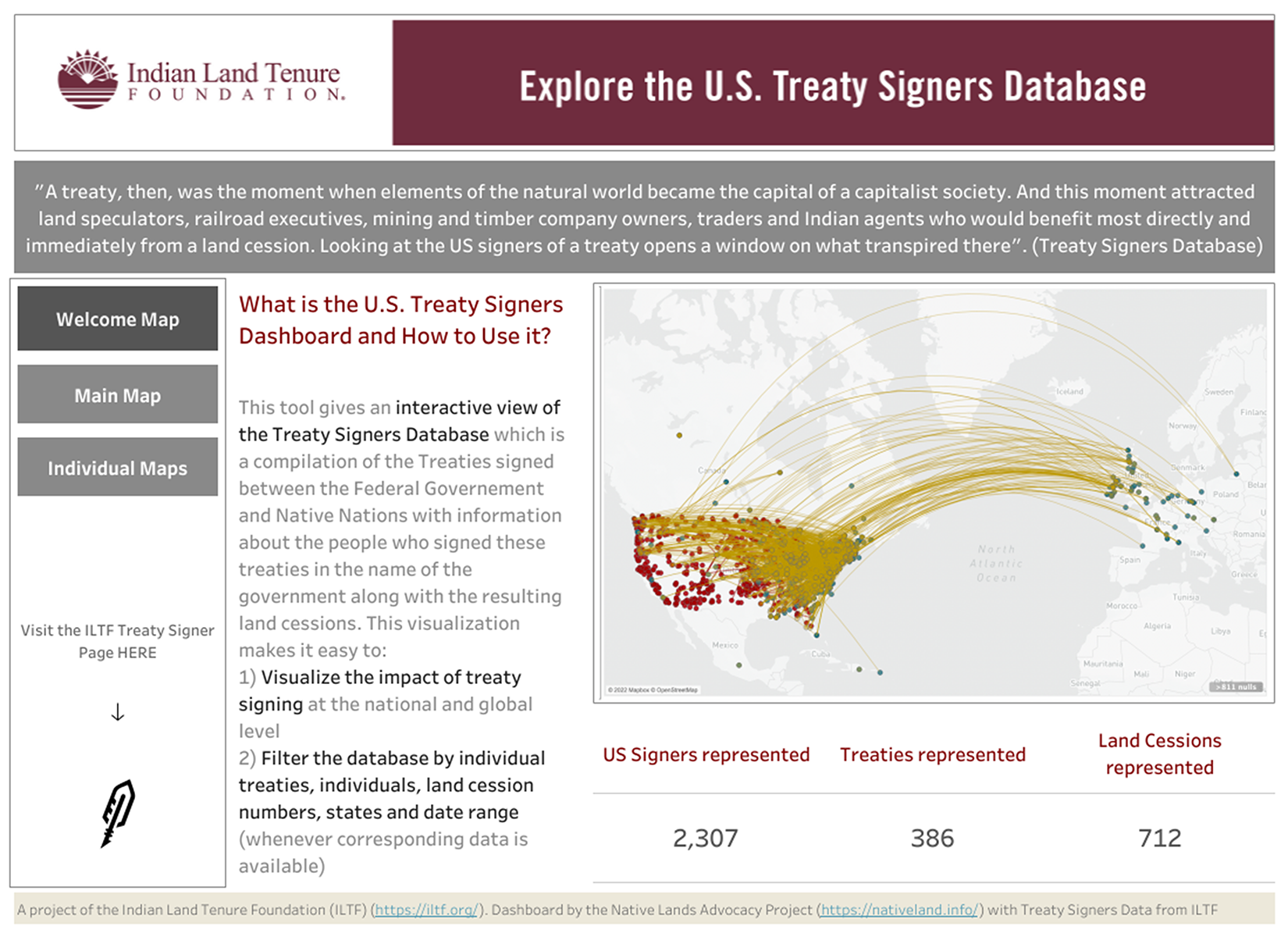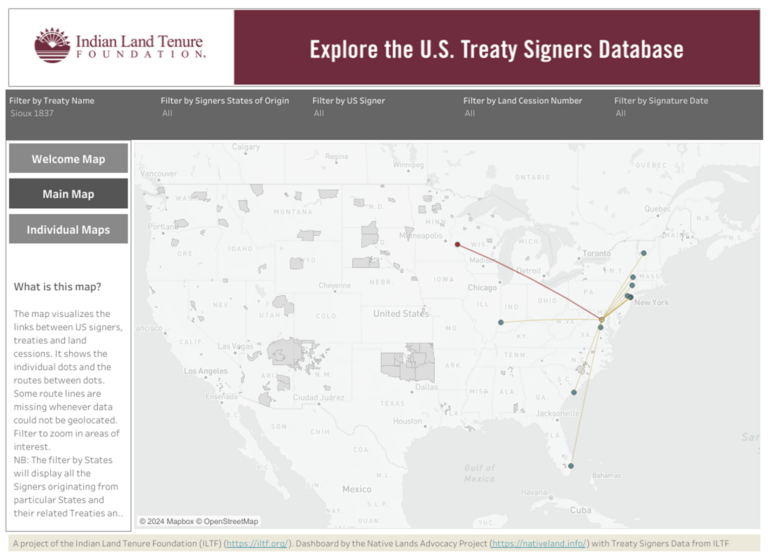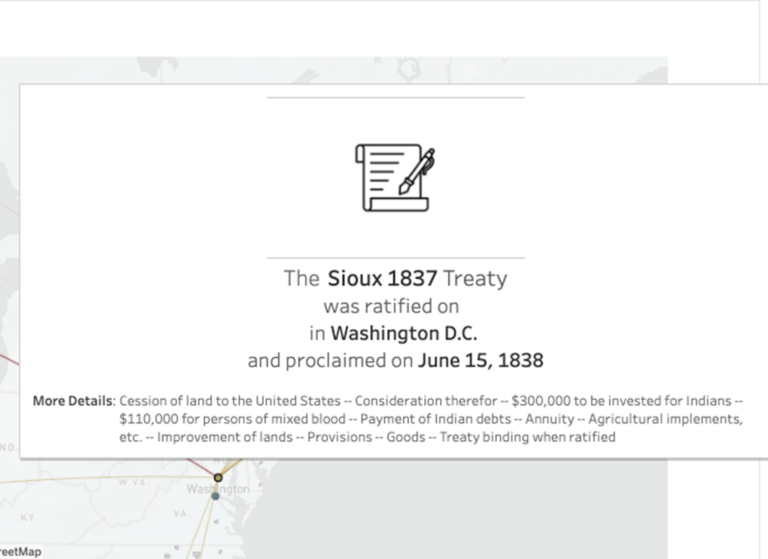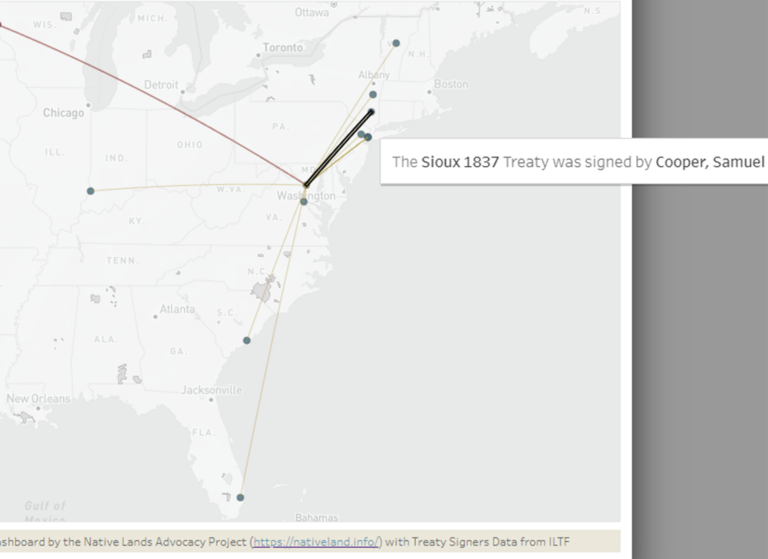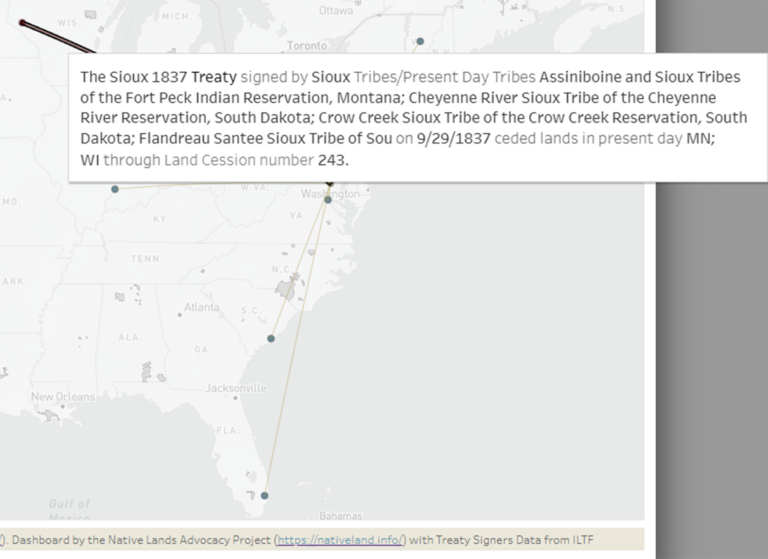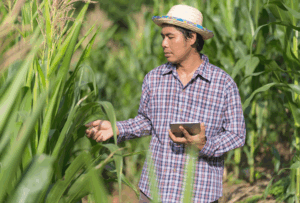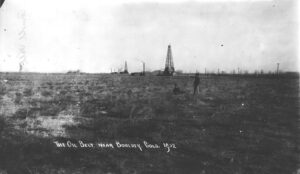Though treaties (in addition to other agreements and legislation between tribal nations and the United States government) define federal Indian policy as we know it, the men who signed the treaties between early Native Americans and Euro-Americans often remain obscure. Who they were and the direct impact they had on land cessions in North America have gone relatively unnoticed in the grand scheme of the United States’s colonial endeavors.
In this blog post, we discuss the Indian Land Tenure Foundation’s Treaty Signers Project, which highlights the individuals who signed the treaties that dispossessed Native peoples of their original homelands. We also examine the Treaty Signers Database, which the Native Lands Advocacy Project (NLAP) developed for the Treaty Signers Project. We explore the significance of the project and the importance of the database as it relates to upending standard colonial narratives.
The Indian Land Tenure Foundation
The Treaty Signers Database, developed by the Native Lands Advocacy Project (NLAP), is a component of the Treaty Signers Project, which was created by the Indian Land Tenure Foundation (ILTF). Established in 2002, the ILTF is a community-based organization which seeks to aid Native American nations and their people in their efforts to reclaim control over their original homelands. Their mission is to see that “land within the original boundaries of every reservation and other areas of high significance where tribes retain aboriginal interest are in Indian ownership and management,” and the key strategies ILTF implements in furtherance of fulfilling that mission are Education, Cultural Awareness, Economic Opportunity, and Legal Reform. The ILTF is also one of NLAP’s long-standing partners, having supported NLAP’s work since our founding in 2019.
The Treaty Signers Project and Database
The Treaty Signers Project was born out of a desire to shed light on the individuals, both Native and non-Native, who signed the treaties between Native Nations and Euro-Americans. The inception of the project came after the Minnesota Historical Society published The Relentless Business of Treaties: How Indigenous Land Became U.S. Property by Martin Case in 2018. This publication was the first real endeavor to compile information on the men who acted as representatives of the U.S. in treaties with Native Nations. The goal of the Treaty Signers Project is to reshape the mythos surrounding the expansion of the United States into the North American west, as well as to challenge our understanding of who the key players were in creating that mythos.
NLAP was brought on to assist ILTF in creating an interactive dashboard that visually represents the Treaty Signers Database and makes it user-friendly. While the database itself is significant, our dashboard makes a difference because connecting interactively US individual signers to the place of signing to resulting land cessions gives a dynamic at a glance visual representation of westward expansion in North America; it highlights in different colors and pathways the relationship between settlers to the treaties they signed, then to the land cessions that were born out of those treaties, clearly uncovering the path of a westward movement of land grab, enabled by signers who sometimes even came straight from Europe.
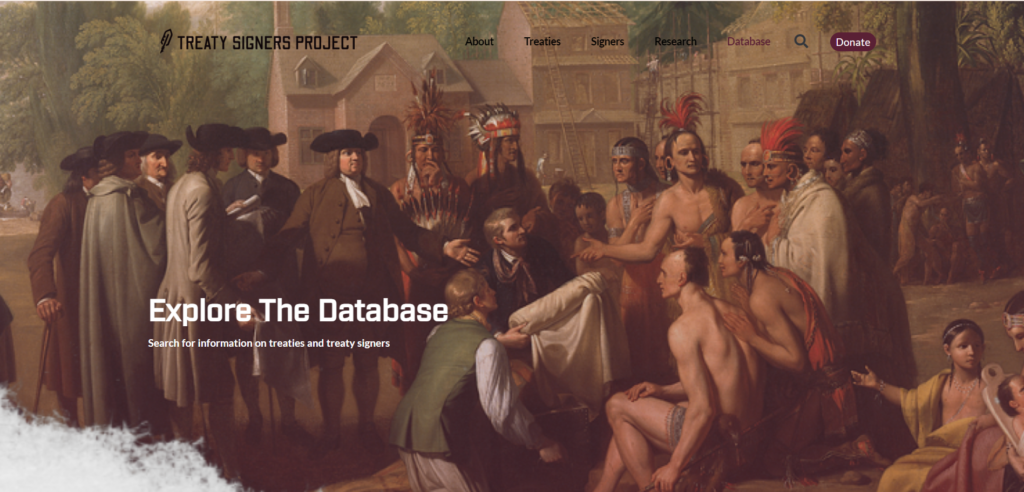
Changing the Narrative
Treaties between Native Americans and early Euro-Americans served as an early vehicle of colonization; indeed, treaties were the means by which lands and resources were wrested from Natives. The signers of these treaties have become memorialized in history as obscure names on paper, with little indication as to who they were or what their motives were in signing these significant documents. The ILTF seeks to change that narrative and to shed light on the identities of these treaty signers, both Native and non-Native, so that we may better understand how the world we live in came to be. Furthermore, this database makes treaty, cession, and signer information—data that has previously existed in disparate archives and historical documents—highly accessible to those tribes and Native individuals whom they concern.
At first glance, the Treaty Signers Database is a veritable sea of information. Upon inspection, however, and with the aid of the website’s “How To” section, one can see that it is a well-composed hub of data regarding the treaty signers. Not only does the database hold information on the names and birth/death places (when available) of the signers, but it also provides details on the treaties themselves. The knowledge that this database makes accessible to the general public is endlessly valuable, as it not only contextualizes the names and stories of both the treaties and the treaty signers, but it also displays the ways in which they are interconnected. ILTF is particularly interested in those signing individuals who signed multiple treaties and gained personal wealth out of these agreements, as there seems to be a clear pattern between some of those signers and the development of trails of successful capitalist ventures.
How to Use the Treaty Signers Database: The Basics
The Treaty Signers Database dashboard can be accessed on the website or viewed on Tableau Public. Below is a brief overview of the dashboard. Click on the images to get a closer look!
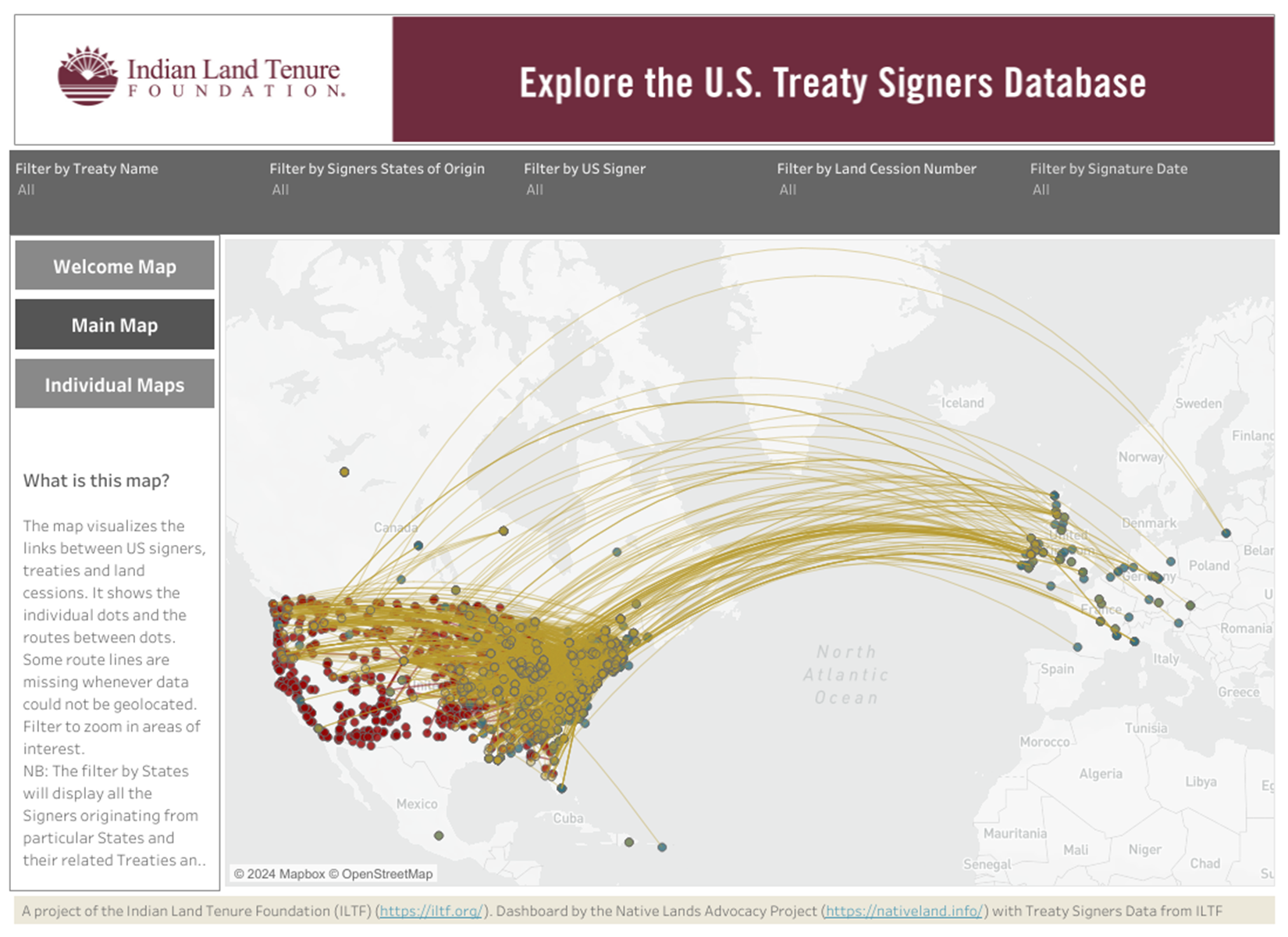
2) Treaty Signers Database Main Map
The second tab is the Main Map, which is an interactive representation of the connections between treaty signers, treaties, and land cessions. Treaty signers are represented by blue dots, treaties by yellow dots, and land cessions by red dots. The lines are the connections from one data point to another; yellow lines represent the connections from signers to treaties and red lines represent the connections between treaties and land cessions. To learn more about how the map is organized, visit ILTF’s How to use the dashboard page.
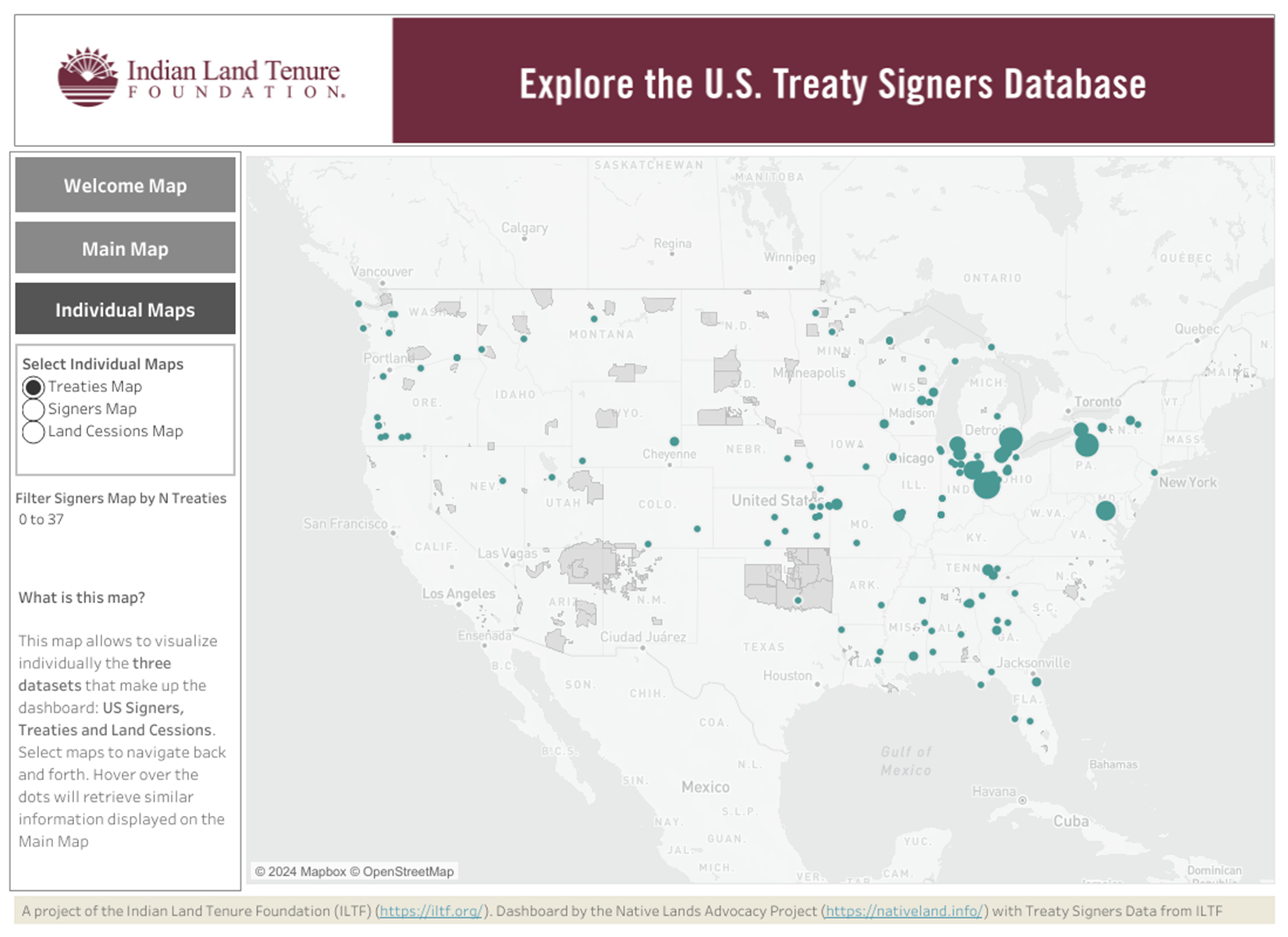
3) Treaty Signers Database Individual Maps
The third tab features the Individual Maps. Users can select one of the three Individual Maps (i.e. Treaties Map, Signers Map, and Land Cessions Map) in order to examine the individual data sets further. Users can filter the Database to isolate treaties, signers, land cessions numbers, signature dates, and Signers’ state of origin.
How to Use the Treaty Signers Database: Example Search
The following is an example of how to use the Treaty Signers Database, specifically the Main Map. The treaty which we will be using for our example search is the Sioux Treaty of 1837.
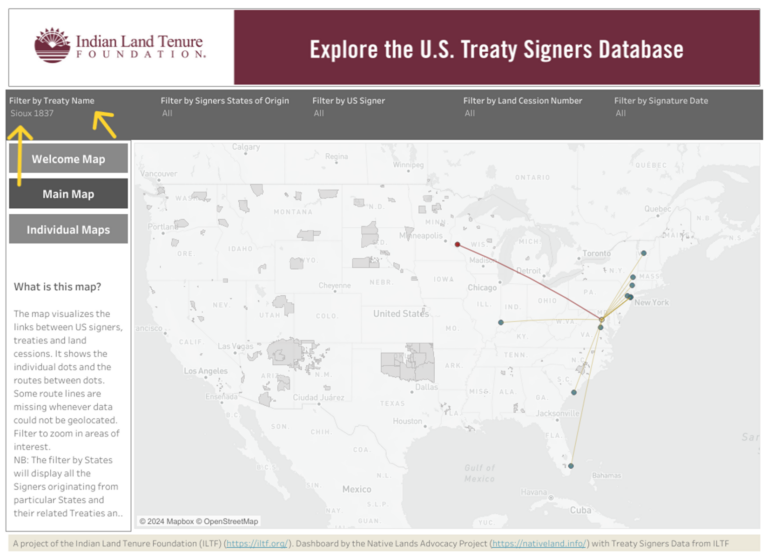
1) Treaty Signers Database Treaty Name Filter
To search specifically for the Sioux Treaty of 1837, go to the far left side of the database to Filter by Treaty Name. From here, you can either scroll through the list of treaties to locate your desired treaty or you can type in the name of the treaty directly into the search box. Remember, to isolate one specific treaty or signer on the map you must de-select “All” in the filter, as the map initially displays all of the treaties/signers/land cessions.
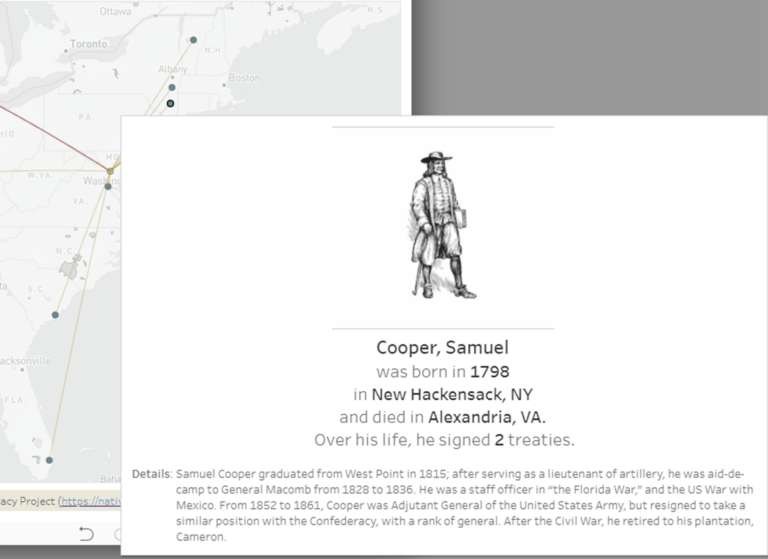
4) Treaty Signers Database Signers Tooltip
There are also a series of blue dots populating the database, each one representing a different signer for the Sioux Treaty of 1837. One such signer was Samuel Cooper; his tooltip includes his birth year, birthplace, and how many treaties he signed in his lifetime. It also includes a brief paragraph with details about his life. It is important to note that some data points will have more information than others.
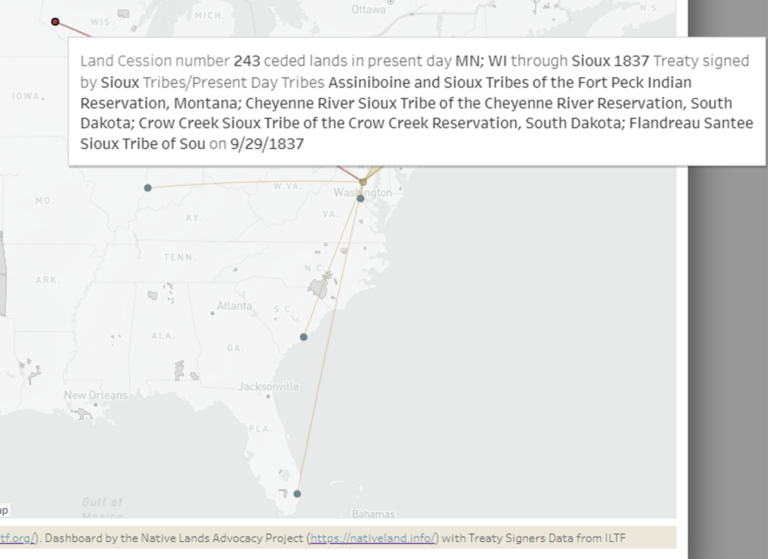
5) Treaty Signers Database Land Cession Tooltip
This search also contains a red dot, which represents the Native land ceded through this treaty. The tooltip for land cessions includes information about that land cession, including its Royce number, the tribe(s) that were involved in signing the treaty for those lands, and the present day location of those lands.
It is important to note that not every search will produce the same results. For instance, some searches may produce a series of data points without lines connecting them. This is because not every treaty could be geolocated. Similarly, treaty signers whose birth or death location could not be identified are placed on Ellis Island.
Indian Land Tenure Foundation. (Accessed 2024). https://iltf.org/
Written by Mauryn Morfitt

